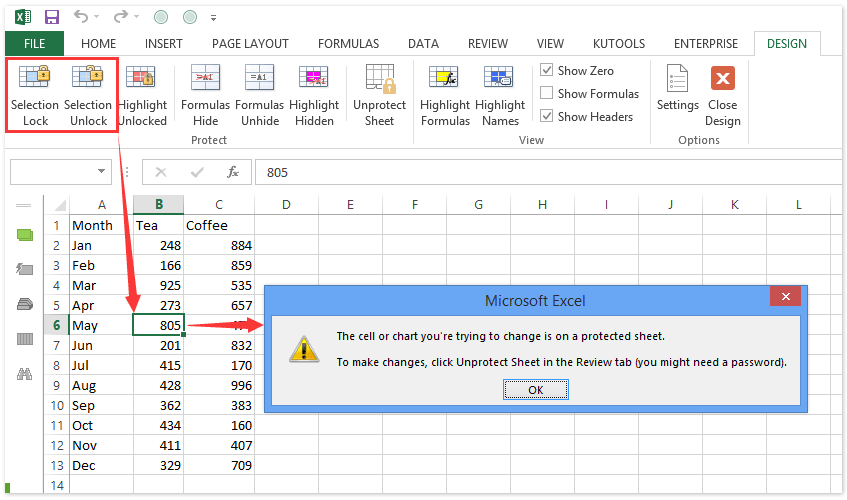5 Ways to Lock Cells in Excel Securely

Excel is one of the most versatile tools for data management, calculation, and analysis, widely used in businesses and personal projects alike. However, with its flexibility comes the need for security and control. One crucial aspect of managing spreadsheets securely is the ability to lock cells to prevent accidental or unauthorized changes. Here, we will explore five effective ways to lock cells in Excel securely, ensuring your data remains protected and your spreadsheets remain efficient and accurate.
Understanding Cell Locking in Excel

Before diving into the methods, it’s important to understand how Excel handles cell locking. By default, all cells in a new Excel sheet are locked, but this does not take effect until you protect the worksheet. This ensures that you can still make changes while setting up your spreadsheet.
1. Basic Cell Protection

- Select the cells or range you want to remain editable.
- Right-click and choose ‘Format Cells’, or go to Home > Format > Format Cells.
- In the ‘Protection’ tab, uncheck the ‘Locked’ box.
- Protect the worksheet by going to Review > Protect Sheet or Protect Workbook.
This method allows you to keep certain cells unlocked while protecting the entire sheet, ensuring only the designated areas are modifiable.
⚠️ Note: Even though cells are locked, this doesn't prevent data entry unless the sheet is protected.
2. Password-Protect Your Excel File

Alongside locking cells, adding a password to open the file provides an additional layer of security:
- Go to File > Info > Protect Workbook > Encrypt with Password.
- Enter your password twice to confirm.
- Close and reopen the file; you’ll need the password to access it.
This ensures that even if someone gains access to the file, they can’t view or modify the data without the password.
3. Advanced Permissions with VBA

For more granular control, Visual Basic for Applications (VBA) can be used:
- Open the VBA Editor by pressing ALT + F11 or going to Developer > Visual Basic.
- Insert a new module, then paste the following code:
Sub ProtectSensitiveCells()
With Worksheets("Sheet1").Range("A1:A10")
.Locked = True
End With
ActiveSheet.Protect Password:="YourPassword", DrawingObjects:=True, Contents:=True, Scenarios:=True
End Sub
- Run the macro to apply protection.
VBA allows for custom protection settings, like protecting only specific cells or allowing users to edit specific ranges with different passwords.
📌 Note: VBA can be complex for beginners. Ensure you back up your workbook before running macros to prevent data loss.
4. Using Read-Only Recommended

If you want to suggest users open your file in read-only mode:
- Go to File > Info > Protect Workbook > Always Open Read-Only.
This doesn’t lock cells per se, but it gives users a heads-up that they should not make changes, promoting data integrity indirectly.
5. Hidden and Very Hidden Sheets

To secure sensitive data or worksheets:
- Right-click on a sheet tab, select ‘Sheet Properties’, and choose ‘Very Hidden’.
This will make the worksheet invisible unless someone knows how to make it visible through VBA.
The above methods offer various degrees of cell locking and security, allowing you to tailor your spreadsheet's protection to your specific needs. By utilizing these techniques, you can safeguard your data against unauthorized changes, ensure data integrity, and prevent accidental modifications. This multi-tiered approach to cell security not only keeps your data safe but also enhances the overall efficiency and reliability of your Excel usage.
In sum, locking cells in Excel involves:
- Basic protection: For general use, protecting sheets or workbooks.
- Password protection: For extra security on file access.
- VBA: For advanced users needing custom protection settings.
- Read-Only: As a subtle suggestion for users not to edit data.
- Sheet visibility: To completely hide sensitive information from casual viewers.
What happens if I forget my password?

+
Excel passwords are difficult to recover as they use encryption. Always keep a backup of your passwords or consider using password managers.
Can I lock cells without VBA?

+
Yes, basic cell locking can be done through the UI without needing VBA. Use the Protect Sheet feature to apply protection settings.
Is there a way to temporarily disable protection?

+
To make changes, you can unprotect the sheet with the password, then re-protect it after modifications. Remember your password to do this easily.
Do these methods work in all versions of Excel?

+
While most methods are consistent across versions, VBA might not work in Excel Online or might require add-ins for older versions.
What’s the difference between hidden and very hidden sheets?

+
Hidden sheets can be made visible by anyone through Excel’s UI. Very hidden sheets can only be unhidden through VBA, offering greater security.